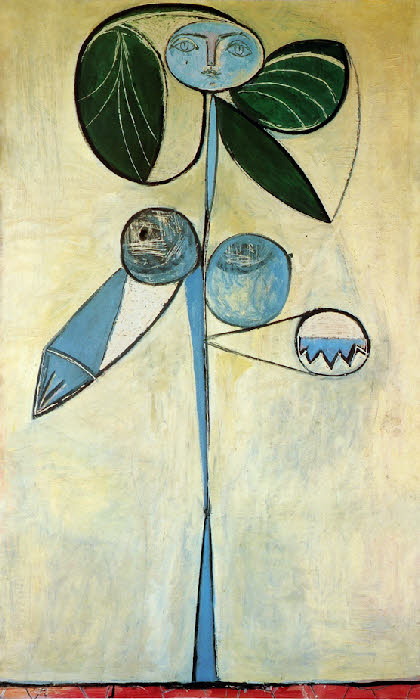Started reading in Life with Picasso, by Françoise Gilot. Partly because I suspected it was edited by a friend of friends. Partly also because I am fascinated by the genius of Picasso, but do not like his pictures, except for the early ones (till his cubist period).
His genius is best explained in the following video:
http://www.youtube.com/watch?v=JU9oaD0e7uU
I remember walking through the Picasso museum in Paris, twenty years ago or so. When I saw the development, I started to appreciate those strange pictures from the second part of his life. Just like I think it is only possible to appreciate the squares from Mondriaan when one sees the development he went through as a painter. Hockney is a same story.
The book by Gilot is much and much better than I expected. It opens the windows for not naturally artistic people like me to his genius. No wonder it was a bestseller when it was published in 1965. More than a million copies were sold.
Françoise Gilot was a french girl of 21 when she met Picasso in 1943. Picasso was 61. Gilot was the only daughter of rich french parents who only expected the best from her. She went to the Sorbonne and to Cambridge. Her father wanted her to be a lawyer, she wanted to be a painter.
The book is written in 1964, about ten years after she had left Picasso after their ten years affair. Picasso was furious with Gilot. It was the first time a woman had left him. He broke all ties with her and even never wanted to see the two children they had together (one of which is Paloma Picasso, who made a perfume that I once bought for Julie about 20 years ago (because I liked the name, not necessarily the smell – that’s how I buy perfumes, I had an after shave for many years, just because it was called Jazz) and that as recent as this summer was still laying, almost unused, in Julie’s drawer).
Gilot was unbelievably mature for her 21 years. Although a virgin at the time when she met Picasso, his vigorous masculinity seemed only attractive to her, but she was not impressed by it. She was interested and fascinated in the rational explanation for his artistic choices. She seemed to be able to recount the conversations they had in minute detail. The insight in the thoughtfulness and the artistic drive of Picasso are the highlights of the book. It is all kept together with delightful descriptions of his erratic behaviour. The superhuman was very often very human.
It is a very respectful book though and it is dedicated to Pablo himself, who fumed about the indiscretions in the book and forced his friend and later biographer Jon Richardson to write a very damaging review in the New York Review of Books. Later in life, after Picasso had died, Richardson changed his opinion about the book and considers it wonderful nowadays.
Françoise Gilot still lives. I read an interview with her from two years ago in Vogue. She still is the wonderful, smart, and independent woman she was at 21. I had to leave Picasso because he would have smothered me, she says at the end of her book. Which is as good of a reason not to want to live with someone as any, I guess. By smothering her Picasso would have gotten bored with her, and left her for a new goddess to be smothered. In fact the next woman in Picasso’s life, younger again than Gilot, stayed with him till the end of his life. He might have lost a little bit of his overpowering presence by that time. They got together when Picasso was 80.
Gilot married twice after that, the last one for 25 years till he died, now almost 20 years ago. She’s still going strong. An admirable woman.



Han says
Thanks for the tip, Joost! Sounds like a book I want to read.